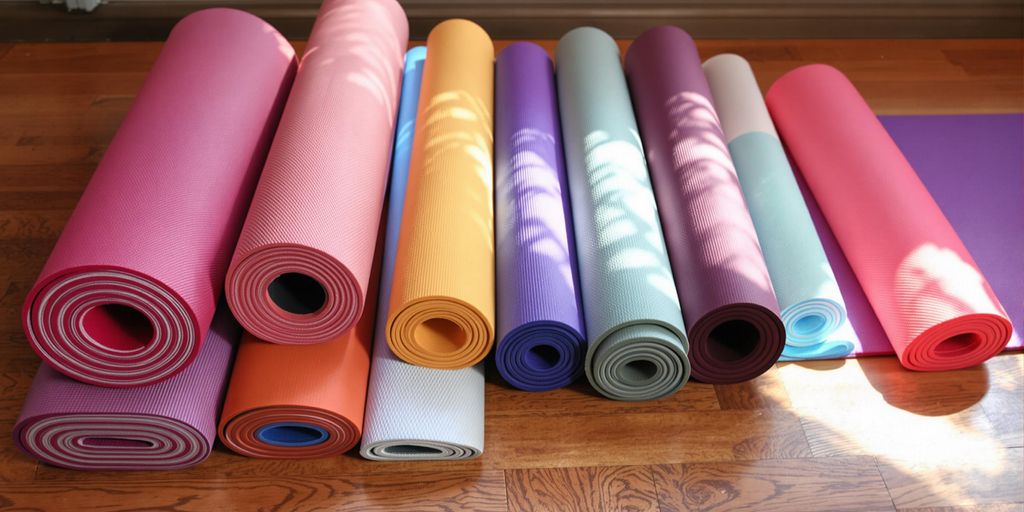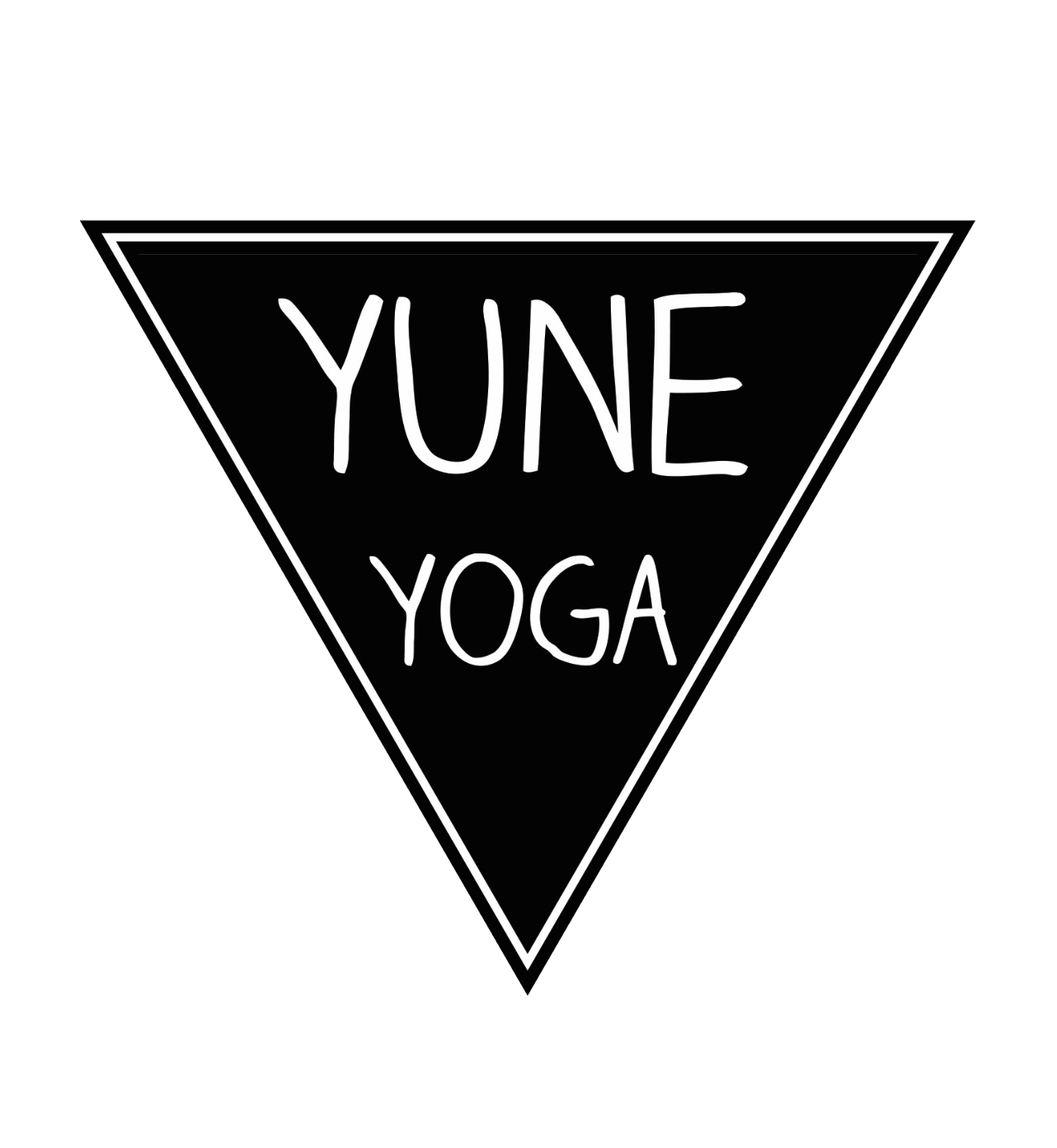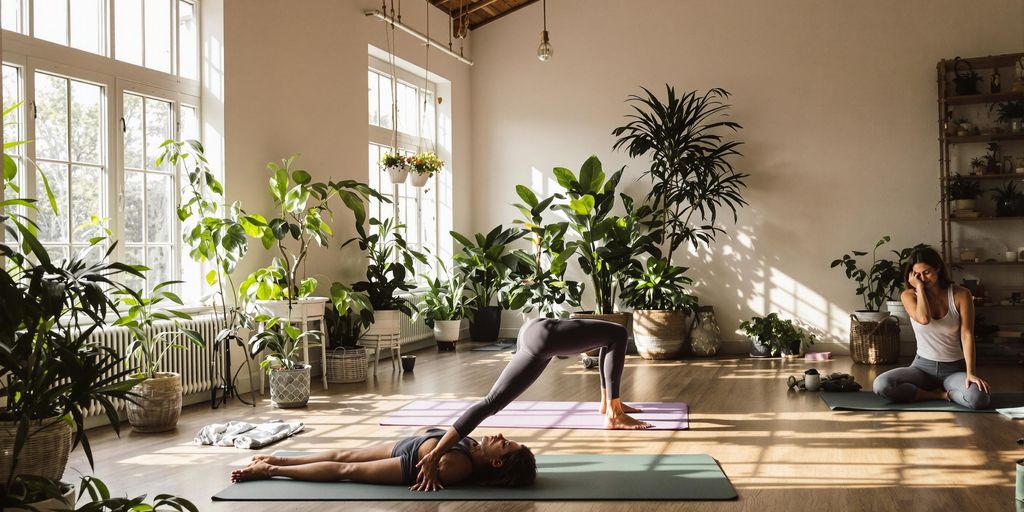
Understanding the Average Yoga Mat Size: Finding Your Ideal Fit
Picking the right yoga mat might seem like a small thing, but trust me, it makes a big difference. Whether you're a beginner or have been practicing for years, the size of your mat can affect everything from comfort to how well you can hold your poses. The average yoga mat size is a good starting point, but there's more to it than just grabbing the first mat you see. Let’s break it down so you can figure out what works best for you.
Key Takeaways
- The average yoga mat size is around 68 inches long and 24 inches wide, a fit for most people.
- Consider your height, yoga style, and personal preferences when choosing a mat.
- Non-standard sizes like extra-long or travel mats cater to specific needs.
- Thickness matters too—thicker mats offer more cushioning, while thinner ones are easier to carry.
- Proper care extends the life of your mat, so clean and store it correctly.
Why Yoga Mat Size Matters
Impact on Comfort and Stability
The size of your yoga mat isn't just about aesthetics—it's about how comfortable and stable you feel during your practice. A mat that's too small can leave your hands or feet slipping off during poses, while one that's too large might feel cumbersome in a crowded studio. Having a mat that suits your body size ensures you can focus on your poses without distractions. Stability is key, especially for balancing poses, and the right mat size helps you stay grounded.
Enhancing Your Practice Experience
Your yoga mat is like your personal space. Whether you're stretching out in downward dog or lying flat for savasana, the right size can make all the difference. A properly sized mat allows you to fully extend your body without worrying about touching the floor. Plus, it creates a mental zone where you can focus entirely on your practice, free from external interruptions.
Choosing the Right Fit for Your Needs
When selecting a mat, think about your specific needs. Are you taller and need extra length? Do you prefer a wider mat to stretch out comfortably? Or maybe you're looking for something compact for travel? Each choice impacts your yoga experience. For example, the Yune Yoga Mat in Hatsumi Orange offers a 5mm thickness for added comfort and stability, making it a great option for those who prioritize both cushioning and durability.
Standard Dimensions of Yoga Mats
Typical Length and Width
Most yoga mats you’ll come across are designed to fit the average practitioner. The standard size is about 68 to 72 inches in length and 24 inches in width. This size works well for most people, but if you’re taller, you might find yourself hanging off the edges during stretches or poses. In that case, a longer mat, measuring 80 inches or more, could be a better choice.
For those who need more lateral space, extra-wide mats are available. These can go up to 36 inches in width, giving you more room to spread out without worrying about stepping off the mat during practice.
Thickness Options and Their Benefits
When it comes to thickness, yoga mats range from ultra-thin travel mats to plush, extra-thick options. Here’s a quick breakdown:
- Thin Mats (1–2 mm): Lightweight and portable, ideal for travel but offer minimal cushioning.
- Standard Mats (3–5 mm): Provide a good balance of comfort and stability, suitable for most yoga styles.
- Thick Mats (6–10 mm): Offer extra cushioning, great for those with sensitive joints or who practice on hard surfaces.
- Extra-Thick Mats (11–13 mm): Primarily used for therapeutic yoga, these mats provide maximum padding but can feel less stable for standing poses.
Keep in mind, material density plays a role too. A thicker foam mat might compress under weight, while a thinner rubber mat could provide better stability despite its slim profile.
How Standard Sizes Suit Most Practitioners
Standard yoga mats are designed to meet the needs of the majority. They’re portable, easy to store, and fit well in most yoga studios. However, if you’re taller, have specific joint concerns, or practice a style like restorative yoga that requires more cushioning, you may need to explore non-standard sizes. Always consider your personal practice and comfort when choosing the right mat for you.
Finding the right yoga mat size isn’t just about measurements—it’s about creating a space where you can focus on your practice without distractions.
Factors to Consider When Choosing a Yoga Mat
Your Height and Body Type
When selecting a yoga mat, your height and body type are key. If you're tall, a standard-length mat might leave your feet or hands hanging off during poses. Opt for an extra-long mat to ensure full coverage for stretches and poses. For those with broader frames, an extra-wide mat can provide the necessary space to move freely without feeling restricted. Comfort and fit should always come first when it comes to your mat.
Yoga Style and Practice Needs
Your yoga style heavily influences the type of mat you should choose. For example:
- Dynamic styles like Vinyasa or Ashtanga benefit from mats with extra grip to handle quick transitions.
- Restorative yoga calls for thicker mats, offering more cushioning to support long-held poses.
- If you practice hot yoga, look for mats with moisture-wicking properties or pair them with a non-slip towel.
The demands of your practice should guide your decision. Whether you need stability, cushioning, or sweat resistance, there's a mat designed for your needs.
Portability and Storage Preferences
Think about where and how you'll use your mat. If you travel frequently, a lightweight, foldable mat is a practical choice. Travel mats are thinner, making them easy to pack, though they might lack the cushioning of standard mats. For home use, you can afford to go with thicker, heavier options, as portability isn’t a concern. Also, consider the storage space available in your home—compact mats are easier to tuck away when not in use.
A yoga mat that aligns with your height, practice style, and storage needs can make all the difference in your yoga journey.
Exploring Non-Standard Yoga Mat Sizes

Oversized Mats for Taller Practitioners
If you’re on the taller side or just love having extra room to stretch, oversized yoga mats might be your best friend. These mats often measure up to 84 inches long and 36 inches wide, giving you the freedom to move without worrying about staying on the mat. They’re ideal for taller individuals or anyone who incorporates props into their practice. The added space can make a big difference in comfort and flow, especially during expansive poses or sequences.
- Perfect for taller yogis who need extra length.
- Great for those who use props like blocks or straps.
- Provides more room for dynamic movements.
For instance, the CAMBIVO non-slip outdoor yoga mat offers a generous 72"L x 32"W size, making it a great choice for anyone looking for more space.
Compact Mats for Travel Convenience
Traveling yogis will appreciate compact mats. These are designed to be lightweight and easy to carry, often made to fold or roll tightly. While they’re usually thinner than standard mats, they still provide enough grip and cushioning for a solid practice. Consider these if you’re always on the go or have limited storage space.
- Lightweight and easy to pack.
- Designed for portability without sacrificing grip.
- Ideal for yoga sessions on the road or at the park.
Extra-Wide Mats for More Space
Sometimes, it’s not just about length—it’s about width, too. Extra-wide mats, which can go up to 36 inches, are perfect for those who like more lateral space. Whether you’re practicing restorative poses or simply enjoy spreading out, these mats can make your session feel less cramped.
- Offers additional width for comfort.
- Useful for yogis who feel restricted by standard dimensions.
- Helps during poses that require broad arm or leg placement.
Non-standard yoga mats cater to unique needs, offering solutions for taller practitioners, frequent travelers, or anyone craving more space. Choosing the right size can transform your yoga practice into a more enjoyable and personalized experience.
How to Measure Your Ideal Yoga Mat Size
Assessing Your Height and Reach
When picking a yoga mat, your height is one of the first things to consider. Most standard mats are around 68 to 72 inches long, which works well for people under six feet tall. If you're taller, look into mats that are at least 80 inches long. You don’t want your hands or feet hanging off during poses like downward dog or savasana. To check, lie down on the mat and stretch your arms overhead—your entire body should fit comfortably.
Evaluating Your Practice Style
Different yoga styles demand different mat features. If you’re into fast-paced practices like Vinyasa or Ashtanga, you might need a mat with extra grip and cushioning. For slower styles like Yin yoga, a thinner mat might suffice. Consider how much space you need to move freely. For example, a wider mat could help if your poses tend to spread out beyond the standard 24-inch width.
Aligning Dimensions with Personal Comfort
Comfort is subjective, and what works for one person might not work for another. Take time to test mats of various sizes. Use a tape measure to visualize dimensions before buying. For instance, the Dora Szentmihalyi Toucan Yoga Mat is 72 inches long and 24 inches wide, offering a good balance of space and portability. This size is ideal for most users, but always prioritize what feels right for your body and practice.
Popular Yoga Mat Brands and Their Offerings
Manduka: Eco-Friendly and Durable
Manduka is a name that pops up a lot when people talk about quality yoga mats. Their mats are built to last, often made from eco-friendly materials that are both durable and comfortable. The most popular options include the PRO series, known for its dense cushioning and excellent grip. If you're someone who practices regularly, this brand is worth considering. Plus, their mats are designed to handle years of wear and tear without breaking down.
Gaiam: Variety in Design and Thickness
Gaiam takes a different approach by offering a wide range of mats to suit various needs. Whether you're into vibrant patterns or prefer a minimalist look, they've got you covered. Their mats come in different thickness levels, from lightweight travel mats to extra-thick ones for more cushioning. This makes them a great choice for beginners or anyone looking for affordable yet reliable options.
Liforme: Premium Features for Advanced Yogis
For those who want to take their practice to the next level, Liforme mats are hard to beat. These mats are known for their alignment guides printed directly on the surface, which is a game-changer for improving your form. They also offer excellent grip, even during sweaty sessions. While they are on the pricier side, many yogis swear by their quality and attention to detail.
A high-quality yoga mat can transform your practice, making it more comfortable and enjoyable. It's an investment in yourself.
Here’s a quick comparison of some key features:
| Brand | Key Features | Ideal For |
|---|---|---|
| Manduka | Durable, eco-friendly, dense | Regular practitioners |
| Gaiam | Affordable, stylish, variety | Beginners and casual yogis |
| Liforme | Alignment guides, premium | Advanced or detail-focused yogis |
If you're looking for an extra thick mat for both home and travel, consider the Galatea Trekk Travel Mat by Yune Yoga. It offers ample space and a non-slip surface, making it a versatile choice for various exercises, including hot yoga.
Caring for Your Yoga Mat

Cleaning and Maintenance Tips
Keeping your yoga mat clean is essential for hygiene and longevity. After each session, wipe down the surface with a damp cloth and a mild detergent or a specially formulated yoga mat cleaner. Avoid using harsh chemicals—they can break down the material over time. For a deeper clean, you can soak your mat in warm water with a gentle soap, but make sure it dries completely before rolling it up again. Regular cleaning prevents bacteria buildup and keeps your mat fresh.
Storing Your Mat Properly
Proper storage can make a big difference in how long your mat lasts. Always roll it with the top side facing out to prevent curling edges. Store it in a cool, dry place, away from direct sunlight, which can fade colors and weaken materials. A yoga mat bag or strap can protect your mat from dirt and moisture during transport, and it’s super convenient if you’re heading to a class.
Extending the Lifespan of Your Mat
To get the most out of your yoga mat, rotate it regularly to even out wear and tear. Avoid stepping on it with shoes, as they can cause unnecessary damage. Also, keep pets off your mat—sharp claws can puncture or tear the surface. Investing in a quality mat like the Oberon Yoga Mat, which features a durable, non-slip surface, can also help ensure your mat stays in great shape for years to come.
Taking care of your yoga mat isn’t just about cleanliness; it’s about creating a space that supports your practice and lasts through countless sessions.
Conclusion
Picking the right yoga mat size might seem like a small detail, but it can really change how you feel during your practice. Whether you're tall, short, or somewhere in between, there's a mat out there that fits just right. Think about your height, the type of yoga you do, and how much space you like to move around. A mat that's too small can feel cramped, while one that's too big might be a hassle to carry. At the end of the day, it's all about what feels good for you. Take your time, try a few out if you can, and find the one that makes you excited to roll it out and get started. Happy yoga-ing!
Frequently Asked Questions
What are the standard dimensions of a yoga mat?
The typical yoga mat measures about 68 inches in length and 24 inches in width. Some mats may be slightly longer or wider, depending on the brand.
How do I choose the right yoga mat size for my height?
If you're taller than 6 feet, you might prefer a mat that's at least 72 inches long to ensure your body fits comfortably during practice.
Does the thickness of a yoga mat matter?
Yes, thicker mats offer more cushioning, which is helpful for poses that put pressure on your knees or wrists. Thinner mats are lighter and better for travel.
Are there yoga mats for taller or broader practitioners?
Yes, oversized and extra-wide mats are available for those who need more space or are taller than average.
What should I consider for yoga mat portability?
If you travel often, look for lightweight or foldable mats. Standard-sized mats are easier to carry and store.
How can I maintain my yoga mat?
Clean your mat regularly with a gentle cleaner and store it in a cool, dry place. Proper care can extend its lifespan.

